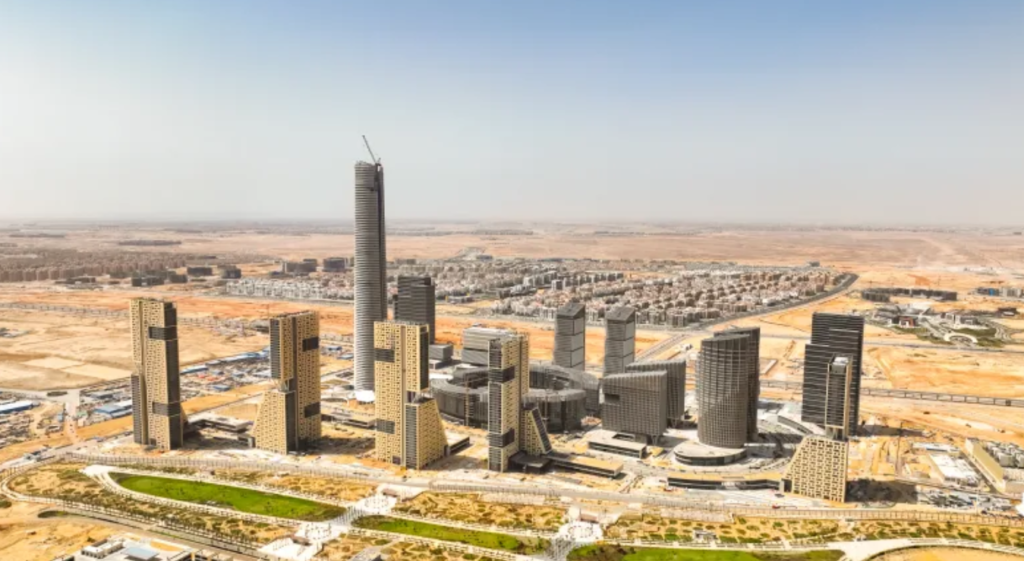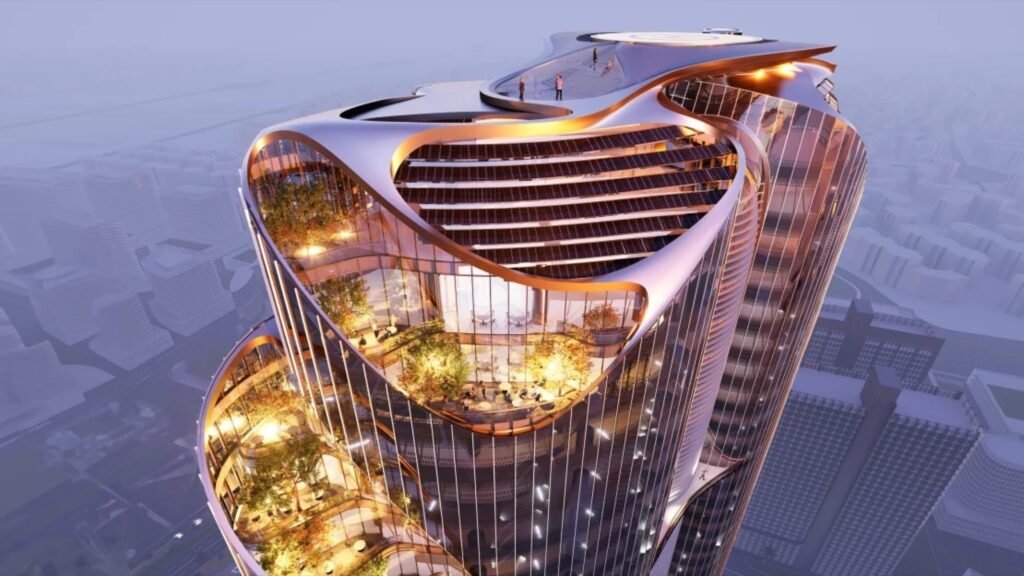Egypt’s New Administrative Capital, a city still under development outside of Cairo, has inspired numerous visionary projects. Among the most ambitious is the construction of a hydrogen-powered skyscraper. The Forbes International Tower, a 240-meter (787 feet) office building set to rise near Africa’s tallest structure, the Iconic Tower, aims to be an environmentally conscious marvel.
Designed by Adrian Smith + Gordon Gill Architecture, the firm behind New York’s Central Park Tower and Saudi Arabia’s upcoming Jeddah Tower, the building is spearheaded by Magnom Properties. The goal is to achieve a net-zero carbon footprint by powering the 43-story tower primarily with clean hydrogen, complemented by solar panels integrated into its facade.
Magnom Properties plans for the tower to operate using 75% hydrogen and 25% solar power, eliminating dependence on the conventional power grid. The use of materials with low-embodied carbon—those produced with reduced emissions—could potentially slash the carbon footprint of the construction process by 58%. Additionally, water recycling systems will reduce the building’s need for freshwater, a crucial step in a nation facing increasing water shortages.
Magnom also aims to create a “net-negative carbon” structure, meaning the skyscraper would remove more carbon dioxide than it emits throughout its lifecycle. The developers hope to make it the first skyscraper globally to earn the Zero Carbon Certificate from the International Living Future Institute.
This project joins a growing trend in net-zero architecture, following efforts like Foster + Partner’s Z6 Tower in Beijing and the upcoming Curzon Wharf in Birmingham, both of which have focused on minimizing emissions. However, using hydrogen as a primary power source in building design is a relatively new concept. Hydrogen, when produced through clean methods, is a renewable resource, though scaling its production to meet current energy demands remains a challenge.
The project has drawn attention from governments, with U.S. Energy Secretary Jennifer Granholm calling hydrogen the “Swiss army knife of zero-carbon technologies.” Yet, questions remain about how rapidly hydrogen production can be ramped up to replace fossil fuels.
Magnom has teamed up with Schneider Electric and H2 Enterprises to explore using LOHC (liquid organic hydrogen carriers) technology. LOHC compounds can absorb or release hydrogen through chemical processes, enabling stable storage and transport using existing fossil fuel infrastructure. Once delivered, the hydrogen is extracted and used to generate electricity in fuel cells. However, the final decision on hydrogen as the tower’s energy source will depend on the ongoing evaluation of its feasibility.
Other architectural firms are also exploring innovative energy solutions for skyscrapers. For instance, Skidmore, Owings & Merrill (SOM) is collaborating with Energy Vault to design a skyscraper that stores energy by lifting and lowering giant blocks using an electric motor. This stored energy can be converted back into electricity during periods of high demand. SOM is also experimenting with hydropower systems that use water storage within buildings.
Despite the uncertainty surrounding its energy source, the Forbes International Tower is expected to be a centerpiece of the New Administrative Capital’s central business district. The smart city, envisioned as a sustainable hub, has already attracted several companies and is progressing steadily after beginning construction in 2016, with an estimated total cost of $58 billion.









